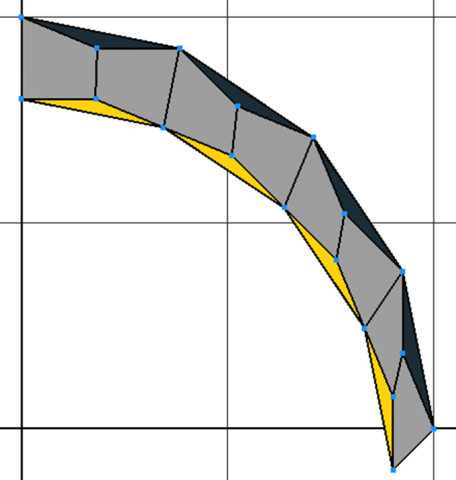I've long struggled with parts that have two curved edges close to each other, but not having the same point of origin. The task is to fill in the area between the curves.
If the curves are far enough apart, I can use tndis and chords. However, if they are close, then I'd have to rotate chords and tndises, which isn't ideal.
Luckily, we have tang for the inside (in yellow). This eliminates the need to rotate ndises, but effectively doubles the number of points. If the inside and the outside of an area to be filled have significantly different number of points, then the result is a large amount of extremely narrow triangles, so this is to be avoided.
What if we had an inverse tang (in black) to be used for the outside? With an equal number of points, it is easy to fill the light gray area with quads.

If the curves are far enough apart, I can use tndis and chords. However, if they are close, then I'd have to rotate chords and tndises, which isn't ideal.
Luckily, we have tang for the inside (in yellow). This eliminates the need to rotate ndises, but effectively doubles the number of points. If the inside and the outside of an area to be filled have significantly different number of points, then the result is a large amount of extremely narrow triangles, so this is to be avoided.
What if we had an inverse tang (in black) to be used for the outside? With an equal number of points, it is easy to fill the light gray area with quads.





